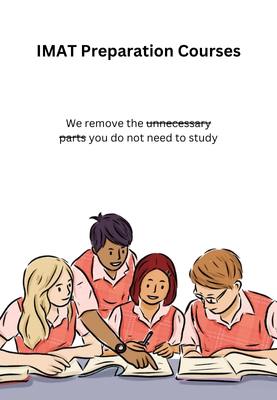Over the past few months, numerous rumors have circulated among students about potential changes to Italian medical programs, following discussions from the Italian Ministry of Education. It’s completely understandable that these speculations caused concern, especially for those considering or currently enrolled in English-taught medical courses.
However, we now have a much clearer picture. The recent updates from the ministry do not affect the English-language medical programs, and the IMAT exam remains a requirement for admission.
To help students navigate this news, we’ve translated the official document released a day ago and summarized its most important points. Once again, we want to reassure you: these proposed changes do not impact the IMAT exam or the English medical track.
Inside the 2025 Filter Semester Reform
On March 28, 2025, Italy’s President enacted a groundbreaking legislative decree, rooted in Law No. 26 of March 14, 2025, to overhaul access to single-cycle master’s degree programs in Medicine and Surgery (LM-41), Dentistry and Dental Prosthetics (LM-46), and Veterinary Medicine (LM-42). Effective from the 2025/2026 academic year, this reform replaces the traditional high-stakes entrance exams with an innovative “filter semester” system—open enrollment followed by merit-based progression. Crafted to bolster the National Health Service (SSN), ensure educational excellence, and sustain university capacity, the decree reflects a collaborative effort, proposed by the Minister of University and Research (MUR) with input from the Minister of Health and parliamentary committees. Here’s a detailed look at its provisions and what they mean.
Article 1: Purpose
The decree’s mission is clear: redefine access to LM-41, LM-46, and LM-42 programs starting in 2025/2026 to strengthen the SSN, uphold training quality, and keep universities viable. Italy’s old system, with its rigid quotas and upfront exams, often sidelined capable students and strained healthcare staffing. This reform opens the door wider, aiming to produce more doctors, dentists, and veterinarians while maintaining standards.
Article 2: Definitions
Clarity underpins the decree with precise terms: “Minister” and “Ministry” refer to MUR; “CUN” is the National University Council; “Filter Semester” is the initial post-enrollment period; “Enrollment” covers this first step, while “Matriculation” applies to later semesters or alternative programs; “SSN” is the National Health Service; and “CFU” denotes University Training Credits. These definitions anchor the reform’s mechanics, distinguishing the open-entry phase from merit-driven continuation.
Article 3: Principles
From 2025/2026, anyone can enroll in the first semester of these programs—no more entry barriers. But there’s a catch: if enrollment surges beyond a university’s capacity, institutions must adapt teaching methods (think hybrid classes or extra sessions) to ensure quality and sustainability. This shift from restriction to flexibility marks a bold move to democratize access while challenging universities to scale up responsibly.
Article 4: Enrollment Procedures
- Students enroll in the filter semester and can simultaneously join another degree or single-cycle master’s program in biomedical, health, pharmaceutical, or veterinary fields (to be listed in a MUR decree within 60 days), even across universities and beyond quotas. The second program’s first semester is free.
- They rank at least five preferred universities for second-semester placement in LM-41, LM-46, or LM-42, or an alternative if they don’t advance.
- A forthcoming MUR decree (with CUN input) will detail alternative programs, filter semester length, student status (including study rights benefits), and options for late enrollment elsewhere.
- Teaching flexibility is key: filter semester classes can bypass faculty-size rules, and universities may add supplementary activities. Students get three attempts at the filter semester, with the option to withdraw before national rankings lock in their scores. This dual-enrollment safety net and preference system give students control and fallback options, easing the pressure of a single make-or-break moment.
The process is multifaceted:
Article 5: Common Qualifying Disciplines
The filter semester’s curriculum gets a national overhaul:
- Within 60 days, a MUR decree (with CUN consultation) will set uniform subjects—biology, chemistry, physics—for LM-41, LM-46, LM-42, and related programs, overriding older constraints (Law 127/1997).
- These subjects, yielding at least 18 CFU, will align study plans nationwide, ensuring fairness in assessment. Universities can toss in extras to enhance learning. This standardization levels the playing field, giving every student the same foundational shot at success, while optional add-ons let institutions shine.
Article 6: National Merit Ranking and Second-Semester Admission
Progression hinges on performance:
- To reach the second semester of LM-41, LM-46, or LM-42, students must earn all filter semester CFU and rank high on a national merit list, compiled by MUR based on uniform exam scores (standards set by the Article 4 decree).
- Winners matriculate at a preferred university or an available slot, per a MUR decree (within 60 days) outlining ranking and placement rules, mindful of immigration laws (Decree 286/1998).
- Those who don’t make the cut can continue in an alternative program at a chosen university, with full CFU recognition, or pivot elsewhere. Universities retain autonomy to partially credit non-qualifiers’ work. This merit-based sieve swaps test-day luck for sustained effort, offering viable paths forward for all.
Article 7: University Funding
Funding syncs with the new reality: the Ordinary University Funding Fund (Law 537/1993) counts LM-41, LM-46, and LM-42 students from the second semester onward. This ties resources to filtered outcomes, pushing universities to guide students through the initial hurdle but leaving first-semester costs to existing budgets.
Article 8: Transitional and Final Provisions
Implementation rolls out strategically:
- Non-state recognized universities are initially exempt, with MUR to set future terms.
- Current students (state and non-state) get transition rules via the Article 4 decree, including CFU recognition.
- English-taught programs dodge these changes entirely. This phased approach smooths the shift for existing systems and students, though non-state institutions may trail behind.
Article 9: Repeals
The decree chips away at the past: Law 264/1999’s restricted-access clause for these programs is axed, but national quotas linger until further delegation law steps (letters f, g, h) kick in. It’s a partial farewell to the old guard, with full liberation still in progress.
Article 10: Financial Neutrality Clause
No extra cash flows here—universities must execute this reform with current human, instrumental, and financial resources. Fiscal restraint defines the approach, potentially stretching institutions thin as they adapt.
Article 11: Entry into Force
The decree activates the day after its Official Gazette publication, setting a tight timeline for MUR to deliver key decrees by late May 2025, ahead of the 2025/2026 rollout.
The files are available for download below
Bozza articolato_DLGS Accesso medicine – In Italian and English
At LOCOMOTIVE Group, we’re here to power your IMAT 2025 journey—from registration and pre-enrollment to university updates and beyond. With personalized study plans and dedicated one-on-one coaching, we’re committed to helping you succeed every step of the way.
Stay ahead of the curve and pursue your dream of studying medicine!
Follow us on Instagram, join our vibrant Telegram community, and explore everything you need on our IMAT 2025 page.
With LOCOMOTIVE Group, your success is our mission!





